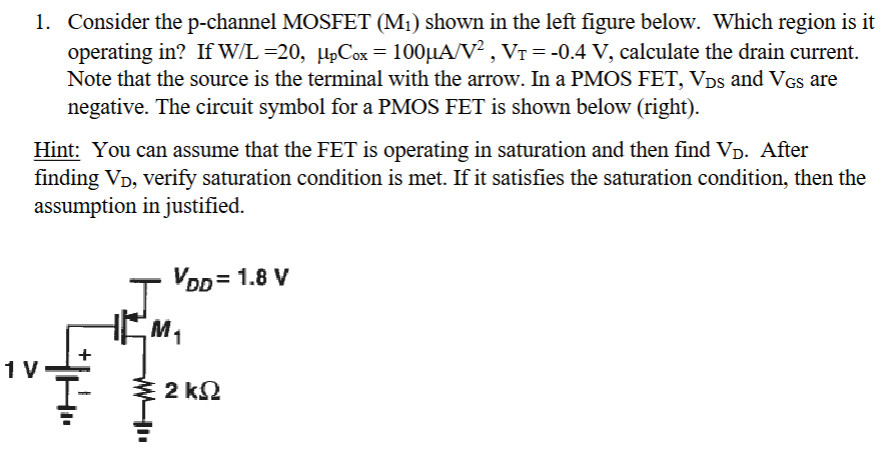Consider the p-channel MOSFET (M1) shown in the left figure below. Which region is it operating in? If W/L = 20, μpCox = 100 μA/V2, VT = -0.4 V, calculate the drain current. Note that the source is the terminal with the arrow. In a PMOS FET, VDS and VGS are negative. The circuit symbol for a PMOS FET is shown below (right). Hint: You can assume that the FET is operating in saturation and then find VD. After finding VD, verify saturation condition is met. If it satisfies the saturation condition, then the assumption in justified.
